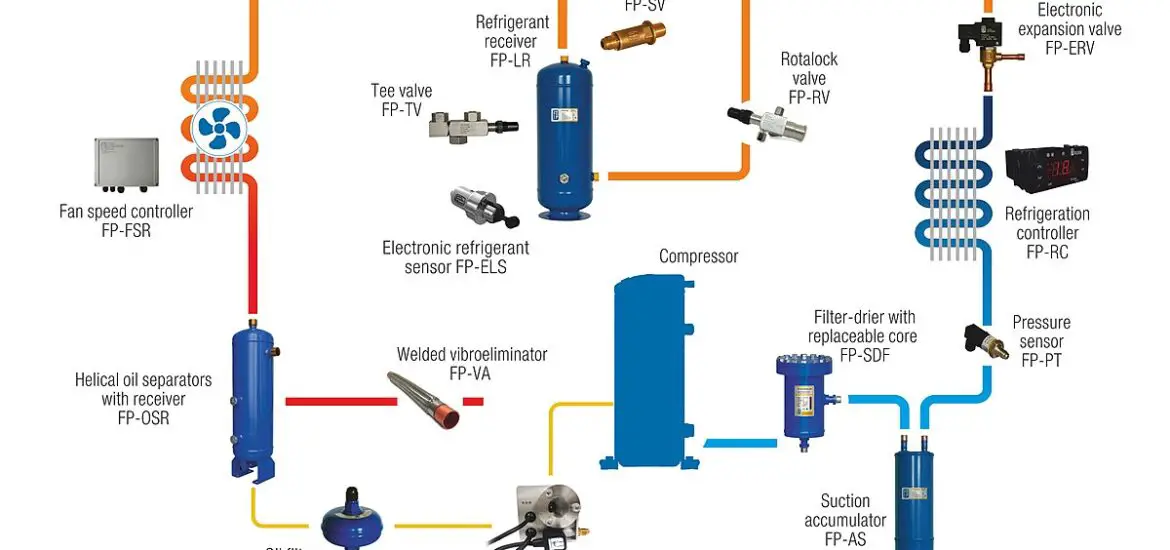This guide will help you gain a comprehensive grasp of this important component called the electronic expansion valve

Table of Contents
What is an Electronic Expansion Valve?
An electronic expansion valve is a key component in many modern refrigeration and air conditioning systems. It controls the amount of refrigerant flow into the evaporator, enabling optimal operation of the system. Its precise control and responsiveness to changes in operating conditions make it an essential part of advanced HVAC systems.
The use of electronics allows the valve to provide a variable and precise control, which is a notable improvement over traditional thermostatic expansion valves. By using real-time data to adjust the flow of refrigerant, electronic expansion valves enable systems to maintain higher levels of energy efficiency and cooling or heating performance.
How Does an Electronic Expansion Valve Work?
The working principle of an electronic expansion valve relies on an electronic control, usually a stepper motor or a pulse-width modulated solenoid. This control mechanism adjusts the opening of the valve, which directly affects the rate of refrigerant flow into the evaporator.
The electronic controller receives inputs from various sensors in the system, such as temperature and pressure, and adjusts the valve opening accordingly to maintain optimum system performance.
The adjustment of the valve is continuously carried out by the controller based on the changing needs of the system. For example, in hot weather, the air conditioning system may need to cool more, and thus the valve would allow more refrigerant to flow. Similarly, in cooler weather, the flow may be reduced to maintain the desired temperature.
Understanding the Electronic Expansion Valve Diagram
To understand an electronic expansion valve diagram, let’s break it down into its key components:
Valve Body: This is the main part of the valve that houses all other components.
Stepper Motor: This is an electronically controlled motor that adjusts the opening of the valve.
Piston: The piston moves up and down within the valve body as directed by the stepper motor, adjusting the flow of refrigerant.
Sensors: These detect pressure and temperature changes and feed this data back to the electronic controller.
When looking at a diagram, you’ll typically see these components labeled and often a path demonstrating the flow of refrigerant through the valve. This diagram can be extremely beneficial for those looking to understand how the valve functions and interacts with the rest of the system.
Check out these other related articles…
Expansion Valve in AC: Your Comprehensive Guide
Expansion Valve Types: Your Comprehensive Guide
Expansion Valve in Refrigerator: Your Easy 101 Guide
Expansion Valve Function: Easy 101 Guide
Expansion Valve Chiller: Your Quick 101 Guide
Step-by-Step Guide to Electronic Expansion Valve Operation
When the HVAC system is activated, the electronic controller begins to receive data from the system’s sensors.
The controller processes this data to determine the optimal refrigerant flow rate for current conditions.
The controller signals the stepper motor to adjust the piston’s position within the valve body, changing the valve’s opening size.
As the valve opening changes, so does the flow rate of the refrigerant into the evaporator.
This process continuously repeats, with the controller constantly adjusting the valve based on sensor feedback, ensuring efficient system operation.
By understanding each step of the electronic expansion valve’s operation, you’ll gain insight into its important role within HVAC systems. While its operations may appear complex initially, understanding the principles behind the electronic expansion valve is key to understanding modern air conditioning and refrigeration systems.
With this knowledge, you can better diagnose issues, make informed decisions about system maintenance, and understand how your system maintains optimal performance while conserving energy.